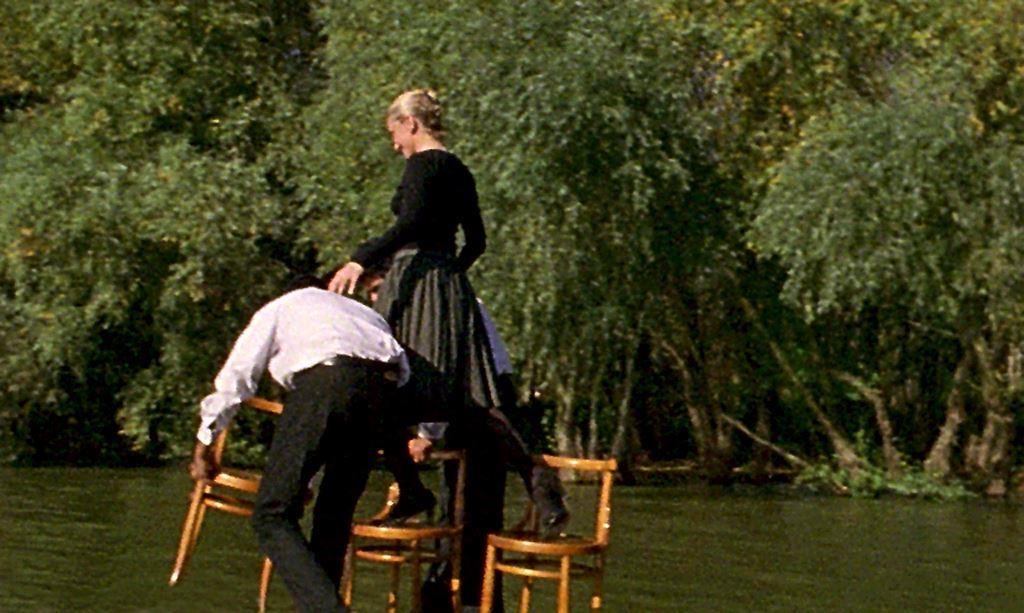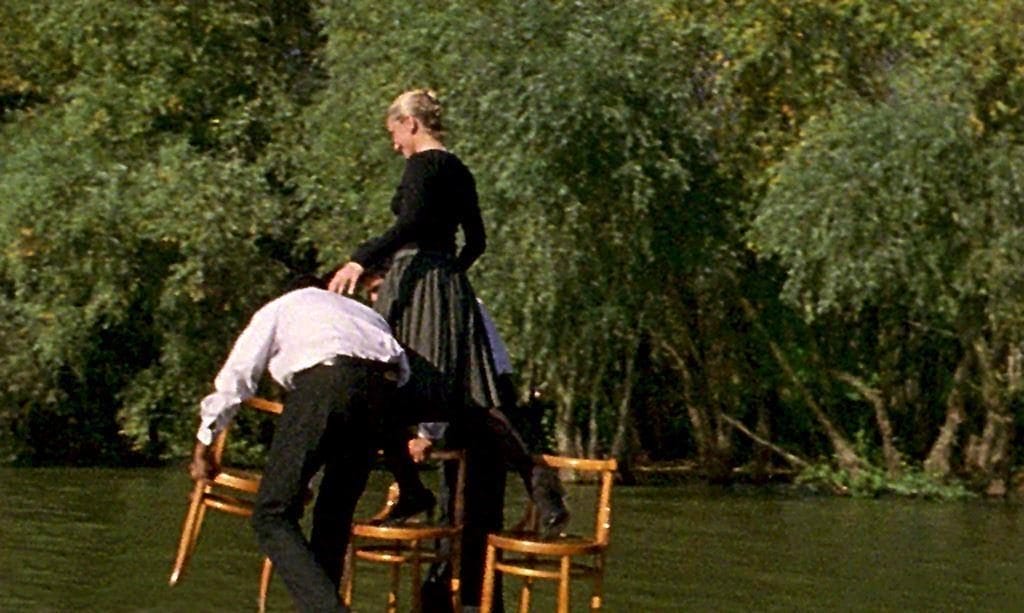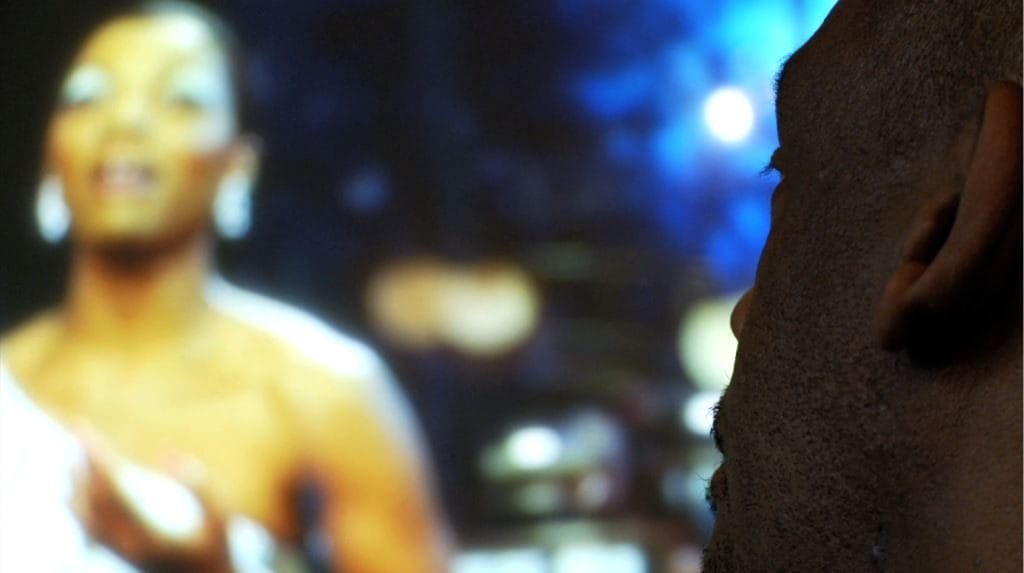ARTS COUNCIL COLLECTION FILMS
3 DEC – 14 MAR
BREDA BEBAN, WALK OF THREE CHAIRS, 2003
Exiled in stages from her homeland, Breda Beban’s personal history is deeply interwoven within her work. With the collapse of the former Yugoslavia she and her partner and collaborator, Hrvoje Horvatic, travelled across Europe as refugees before eventually settling in London. Despite these experiences, Beban’s work evokes the tenderness at the edge of things that binds past and present, history and reality, loss and memory, in a transforming, visually poetic form. Physically present in Walk of Three Chairs, Beban floats down the Danube on a barge accompanied by a gypsy folk band, singing a traditional Balkan song, Who Doesn’t Know How To Suffer Doesn’t Know How to Love. Positioned at a point in the river that is traditionally thought to be the edge of Europe and the start of the Balkans, we see holiday dachas nestled between green trees on the left bank and the contrastingly industrial landscape of Belgrade on the right.
© the artist. Commissioned by Film and Video Umbrella in association with John Hansard Gallery, Southampton and supported by Arts Council England
ERIC FONG, HARRY, 2003
My practice is concept-based, and involves video, sculpture and photography to explore biomedical issues. Recently, my work has become more socially engaged, and has involved collaborations with people in local communities to explore issues surrounding medical conditions such as dementia and respiratory disorders. Between September 2002 and March 2003, I worked as an artist-in-residence at Age Concern Kensington & Chelsea, and engaged older people with dementia in creative activities to produce collaborative artworks that would enhance public understanding of their perceptual difficulties. The video, ‘Harry’, was one of the works produced during this residency in collaboration with Harry, a feisty 81-year-old former boxer, jazz drummer and ballroom dancer who now has dementia. It focused on his undiminished flair for performance and his joy of living. Eric Fong
© the artist
———-
19 OCT – 30 NOV
CHARLOTE PRODGER, BRIDGIT, 2016
Narrative fragments sourced from personal emails, anecdotes and found text provide the starting point for much of Charlotte Prodger’s work, which encompasses sculpture, moving image, sound and performance. BRIDGIT (2016), a 32 minute film that brings together a range of short clips filmed on the artist’s iPhone over a period of a year, offers a complex meditation on the relationship between place, time and identity. Prodger’s footage – much of it near-static – includes shots of her home, the view through train windows and the observation deck of a ship, and the Aberdeenshire countryside. The length of each clip – just under four minutes long – was determined by the device’s limited storage. Prodger’s diverse footage is overlaid with a spoken narration, which consists of the artist’s personal reflections on subjects including a recent medical procedure; quotes from theorists and writers on the subject of technology and identity; and information about the Neolithic deity that gives the piece its name. Supported by Hollybush Gardens and Creative Scotland.
© the artist
IMOGEN STIDWORTHY, BARRABACKSLARRABANG, 2009
Filmed in two Liverpool pubs, Imogen Stidworthy’s Barrabackslarrabang features individuals speaking in a local form of backslang. Traditionally, blackslang – which consists of the insertion of extra vowels and syllables into ordinary speech – was used to obscure discussion about illegal activity. As Stidworthy comments, this language repels and alienates all but those ‘in the know’. Stidworthy’s complex videos, sound works and installations treat the voice as a sculptural material, and explore the points at which language and other forms of communication collapse and become meaningless. She states: ‘I think one of the ongoing conditions of language in many of my works is that there is a very ambiguous, very unstable status in terms of the idea that it can carry meaning, or the kinds of meaning that it does carry.’
Arts Council Collection, Southbank Centre, London © the artist.





